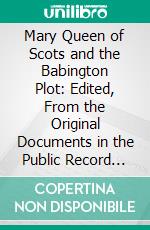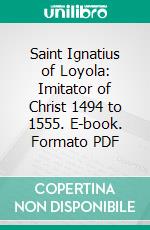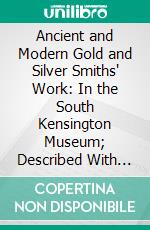John Hungerford Pollen eBooks
eBooks di John Hungerford Pollen di Formato Pdf
Mary Queen of Scots and the Babington Plot: Edited, From the Original Documents in the Public Record Office, the Yelverton Mss., And Elsewhere. E-book. Formato PDF John Hungerford Pollen - Forgotten Books, 2017 -
The story is told that Queen Victoria, calling once on the late Sir John Millais, took his little boy, whose face is familiar to us in more than one Of the great painter's pictures, and set him on her knee. But the child pouted, and would not be friendly, saying in explanation, You are wicked Queen Elizabeth, who cut Off good Queen Mary's head.' Her Majesty laughingly kissed the child saying, 'no, dear, I am Queen Of England, because I descend from good Queen Mary; and I have not a drop of wicked Queen Elizabeth's blood in my body.'
Saint Ignatius of Loyola: Imitator of Christ 1494 to 1555. E-book. Formato PDF John Hungerford Pollen - Forgotten Books, 2017 -
But this too needs consideration, for dif ferent people see saintliness in different fea tures. Some admire entire detachment from the world, some entire devotion to God's cause among men. Some think most of one virtue, some Of another. There are many virtues, and eminence in any Of them eventually means holiness in all. Still, some virtues are more fundamental than others and I do not think that any one will quarrel with me if, in this case, I take Christlikeness as the great virtue to be outlined. The imitation of Christ is a topic familiar to all, and everyone in his measure knows something, or even much, about the ideals which the word recalls.
Ancient and Modern Gold and Silver Smiths' Work: In the South Kensington Museum; Described With an Introduction. E-book. Formato PDF John Hungerford Pollen - Forgotten Books, 2017 -
Thefe metals have been fometimes taken in exchange by weight, in the ihape of ornaments for the neck, the arms, the ears, or the ankles; fometimes in the rude form of duf't, bars, or ingots; fometimes {tamped with the mark of kings, govern ments, or cities. Perhaps the earliei't recorded mark of this kind was the rude image of a Iheep or an ox, the metal being called in Latin from that image petunia, from peenr.


